Estás usando un navegador obsoleto. No se pueden mostrar estos u otros sitios web correctamente.
Se debe actualizar o usar un navegador alternativo.
Se debe actualizar o usar un navegador alternativo.
No parece tan pequeño en otras fotos
95 metros de eslora y 8.30 metros de manga.
1550 toneladas de desplazamiento y 2460 en inmersión.
Saludos
Griffiths911
British War Veteran
Buenos días mis amigos aquí en ZM. Permítanme compartir algunas investigaciones he completado recientemente. Me disculpo ahora a publicar mis resultados en Inglés.
Voy a entender si se quita:
I have been making contact with many Argentine veterans to encourage friendship and reconciliation between both sides.
Whilst doing this I have been able to exchange information relating to combat incidents that my old ship was involved in that have not been historically recorded.
A lot of these unrecorded actions are simply down to the fact that even though it has been thirty four years since we fought each other in the South Atlantic, there has been a very limited exchange of information between the belligerents involved.
Therefore history is presented with a British view on the war or an Argentine one, this will inevitably lead to inaccuracies and, depending what country produced the book, a somewhat one sided patriotic perspective.
Well, I have been communicating with one particular naval Argentine pilot and with the assistance of some other friends on social media, have been able to piece together one action that my ship CARDIFF took part in.
On the night of 2 June 1982 CARDIFF was ordered to close the islands to a position standing off the capital, Puerto Argentino.
Our mission is to form a missile trap (ambush) and destroy any Argentine supply aircraft attempting to land at the airport there. In simple terms, detect them and shoot them down with our medium range Seadart missile system - GWS30.
At around 23:00Z CARDIFF did detect an approaching aircraft - see attachments - and fired two Seadart missiles, both missed.
At around 23:30Z the very same aircraft took off from Puerto Argentino and CARDIFF fired one missile at it and again missed.
What kind of aircraft was this, who was flying it and how did they escape being shot down by one of the most sophisticated shipborne surface to air missile systems anywhere in the word at that time?
This mystery has puzzled me for many years so I decided to make some investigations of my own. First thing I needed was to get some accurate data relating to where CARDIFF was when these actions took place.
I managed, with the assistance of Andy Smith, to get a copy of CARDIFF's 'Ship Log Book' entries for the 2 June 1982 (attached). This gave me the latitude and longitude positions of the ship that I was looking for and I knew they would be accurate.
I then passed this data in its entirety to my contact in Buenos Aries, a former Argentine Navy pilot in 1982 and now a retired Admiral, his name is Luis Alberto De Vincenti. He very kindly plotted CARDIFF's movements and the flight path of the aircraft on his own air chart which is attached also.
Luis was one of the pilots flying the same aircraft later that night...yes! they made another attempt to land at Puerto Argentino, why? because they were totally unaware we had fired three missiles at them earlier!
Here is what was communicated to me by Admiral Luis Alberto De Vincenti, please use the chart data and the testimony from Luis to see the whole picture clearly. Remember we were operating in ZULU time which was three hours ahead of our enemy:
"Regarding the flight on June 2nd, aircraft 5-T-21 took off from Río Grande at 18:45 (LT) (H + 3) and landed on the islands at 20:00. The pilot was Commander Luis Nicolás D' Imperio and the copilot Lieutenant Jorge Eduardo Oliveira, unfortunately both died years ago due to different health problems. They were always recognized by their courage and professionalism. After take off they climbed a little to avoid terrain elevations and looked for protection flying 50 feet over the sea. The islands air control informed that they had been attacked after take off but they never saw anything and did not know its origin.
Your testimony was a real surprise for all pilots who flew that plane. We were never certain if this had happened. Sometimes, people from the islands or the crew located in the rear of the plane reported seeing a flash in the dark horizon during the approach or after take off. This was never regarded as true because there was no confirmation from the cockpit or other reliable source and was assumed to be the result of the moment´s distress.
Our courses were planed randomly and in that time we entered to the islands from the south of the airport. During the approach we concentrated on flying 50 feet above the sea at 320 knots, in electronic silence, night conditions, poor visibility and while listening to tactical instructions from the air control. A very dim light illuminated our instruments panel in order to facilitate the copilot’s external view. The pilot was flying instruments and had to cover his wind shield with a curtain to avoid suffering vertigo from the crest of waves and snow precipitation. When we made visual contact with the San Felipe Lighthouse the pilot removed the curtain and we had to climb a bit because the airport height was 72 feet. Those moments, as well as the takeoffs were the most dangerous situation against British ships.
The unloading and loading process were fast, usually with engines running and ready to take off at the possibility of Harrier attacks. We knew their enormous superiority and were our greatest concern. Their persecutions before and after takeoff were really aggressive and in some cases longer than expected. We had to turn violently to both sides with large bank angles, at very low altitude and full speed in order to get away. These never ending moments were extremely distressing. Those who were in the passenger cabin suffered more because they did not have enough information regarding the situation. The serenity always came back when we were notified that the attackers had left the chase.
That night there was a new attempt to cross the plane; Commander D' Imperio was the mission leader, Oliveira as pilot and me as copilot. We took off from Río Grande at 23:30 (LT) and had to return due to the presence of Harriers close to the islands.
We knew the Sea Dart was not very effective at low altitude but three unsuccessful missile launches indicated that it was a lucky night for the first 5-T-21 crew, fortunately for us. We would be interested to know which the geographical position of HMS Cardiff that night was. Was shooting down transport planes a mission only for your ship or did the rest of the fleet have it too? Do you know if we were attacked by other units? Was your radar the first alarm of our presence? Also, what was your role on board?
Our Squadron conducted 57 flights before the arrival of the Task Force. Between May 1st and June 11th, we had 12 successful flights and 13 aborted flights, usually by air opposition.
During 1982 I was a lieutenant at the age of 31. Years passed and in 2002 and 2003 I was the Argentine Naval Attaché in London. I was excited to exchange experiences with the British officers who participated in the war. Unfortunately we didn´t have the opportunity to meet at that time, it would have been surely pleasing to meet you. I keep an excellent memory of the good times spent in your country with my family, making friends and visiting beautiful places.
The members of the whole squadron are retired; we keep in touch and usually get together to remember those actions with great pride. I attached a photo of 5-T-21 flying over Tierra del Fuego with the colours we used during war.
I will share your feelings of authentic friendship with our veterans and I am sure they will greatly appreciate it. Please, also send my warmest regards to your ship’s veterans.
I attached a picture of an F-28 veterans’ gathering from some years ago; note the new planes color after war."
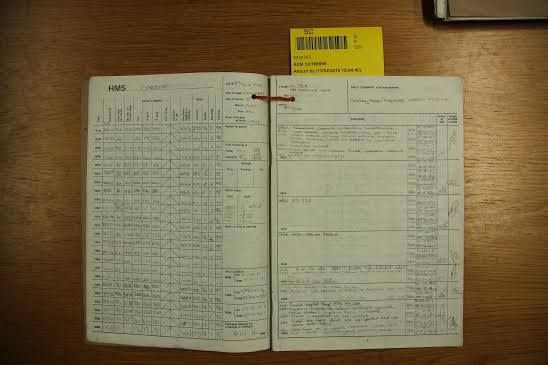

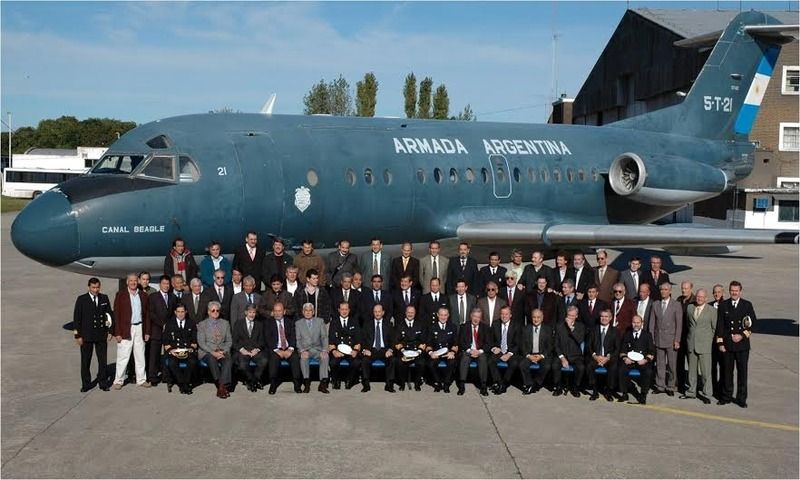
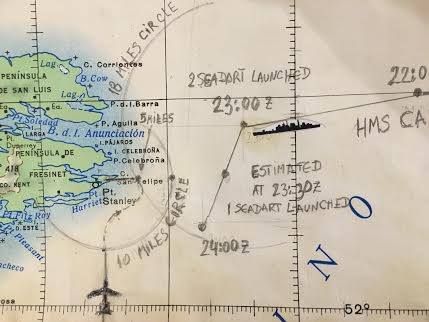
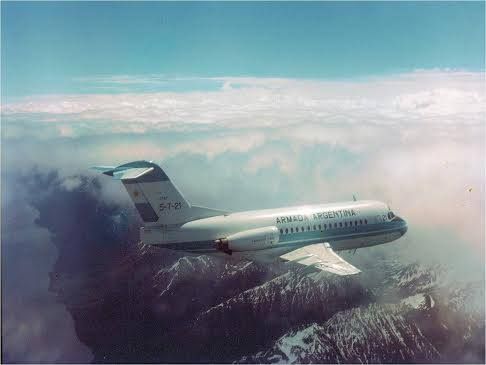
Voy a entender si se quita:
I have been making contact with many Argentine veterans to encourage friendship and reconciliation between both sides.
Whilst doing this I have been able to exchange information relating to combat incidents that my old ship was involved in that have not been historically recorded.
A lot of these unrecorded actions are simply down to the fact that even though it has been thirty four years since we fought each other in the South Atlantic, there has been a very limited exchange of information between the belligerents involved.
Therefore history is presented with a British view on the war or an Argentine one, this will inevitably lead to inaccuracies and, depending what country produced the book, a somewhat one sided patriotic perspective.
Well, I have been communicating with one particular naval Argentine pilot and with the assistance of some other friends on social media, have been able to piece together one action that my ship CARDIFF took part in.
On the night of 2 June 1982 CARDIFF was ordered to close the islands to a position standing off the capital, Puerto Argentino.
Our mission is to form a missile trap (ambush) and destroy any Argentine supply aircraft attempting to land at the airport there. In simple terms, detect them and shoot them down with our medium range Seadart missile system - GWS30.
At around 23:00Z CARDIFF did detect an approaching aircraft - see attachments - and fired two Seadart missiles, both missed.
At around 23:30Z the very same aircraft took off from Puerto Argentino and CARDIFF fired one missile at it and again missed.
What kind of aircraft was this, who was flying it and how did they escape being shot down by one of the most sophisticated shipborne surface to air missile systems anywhere in the word at that time?
This mystery has puzzled me for many years so I decided to make some investigations of my own. First thing I needed was to get some accurate data relating to where CARDIFF was when these actions took place.
I managed, with the assistance of Andy Smith, to get a copy of CARDIFF's 'Ship Log Book' entries for the 2 June 1982 (attached). This gave me the latitude and longitude positions of the ship that I was looking for and I knew they would be accurate.
I then passed this data in its entirety to my contact in Buenos Aries, a former Argentine Navy pilot in 1982 and now a retired Admiral, his name is Luis Alberto De Vincenti. He very kindly plotted CARDIFF's movements and the flight path of the aircraft on his own air chart which is attached also.
Luis was one of the pilots flying the same aircraft later that night...yes! they made another attempt to land at Puerto Argentino, why? because they were totally unaware we had fired three missiles at them earlier!
Here is what was communicated to me by Admiral Luis Alberto De Vincenti, please use the chart data and the testimony from Luis to see the whole picture clearly. Remember we were operating in ZULU time which was three hours ahead of our enemy:
"Regarding the flight on June 2nd, aircraft 5-T-21 took off from Río Grande at 18:45 (LT) (H + 3) and landed on the islands at 20:00. The pilot was Commander Luis Nicolás D' Imperio and the copilot Lieutenant Jorge Eduardo Oliveira, unfortunately both died years ago due to different health problems. They were always recognized by their courage and professionalism. After take off they climbed a little to avoid terrain elevations and looked for protection flying 50 feet over the sea. The islands air control informed that they had been attacked after take off but they never saw anything and did not know its origin.
Your testimony was a real surprise for all pilots who flew that plane. We were never certain if this had happened. Sometimes, people from the islands or the crew located in the rear of the plane reported seeing a flash in the dark horizon during the approach or after take off. This was never regarded as true because there was no confirmation from the cockpit or other reliable source and was assumed to be the result of the moment´s distress.
Our courses were planed randomly and in that time we entered to the islands from the south of the airport. During the approach we concentrated on flying 50 feet above the sea at 320 knots, in electronic silence, night conditions, poor visibility and while listening to tactical instructions from the air control. A very dim light illuminated our instruments panel in order to facilitate the copilot’s external view. The pilot was flying instruments and had to cover his wind shield with a curtain to avoid suffering vertigo from the crest of waves and snow precipitation. When we made visual contact with the San Felipe Lighthouse the pilot removed the curtain and we had to climb a bit because the airport height was 72 feet. Those moments, as well as the takeoffs were the most dangerous situation against British ships.
The unloading and loading process were fast, usually with engines running and ready to take off at the possibility of Harrier attacks. We knew their enormous superiority and were our greatest concern. Their persecutions before and after takeoff were really aggressive and in some cases longer than expected. We had to turn violently to both sides with large bank angles, at very low altitude and full speed in order to get away. These never ending moments were extremely distressing. Those who were in the passenger cabin suffered more because they did not have enough information regarding the situation. The serenity always came back when we were notified that the attackers had left the chase.
That night there was a new attempt to cross the plane; Commander D' Imperio was the mission leader, Oliveira as pilot and me as copilot. We took off from Río Grande at 23:30 (LT) and had to return due to the presence of Harriers close to the islands.
We knew the Sea Dart was not very effective at low altitude but three unsuccessful missile launches indicated that it was a lucky night for the first 5-T-21 crew, fortunately for us. We would be interested to know which the geographical position of HMS Cardiff that night was. Was shooting down transport planes a mission only for your ship or did the rest of the fleet have it too? Do you know if we were attacked by other units? Was your radar the first alarm of our presence? Also, what was your role on board?
Our Squadron conducted 57 flights before the arrival of the Task Force. Between May 1st and June 11th, we had 12 successful flights and 13 aborted flights, usually by air opposition.
During 1982 I was a lieutenant at the age of 31. Years passed and in 2002 and 2003 I was the Argentine Naval Attaché in London. I was excited to exchange experiences with the British officers who participated in the war. Unfortunately we didn´t have the opportunity to meet at that time, it would have been surely pleasing to meet you. I keep an excellent memory of the good times spent in your country with my family, making friends and visiting beautiful places.
The members of the whole squadron are retired; we keep in touch and usually get together to remember those actions with great pride. I attached a photo of 5-T-21 flying over Tierra del Fuego with the colours we used during war.
I will share your feelings of authentic friendship with our veterans and I am sure they will greatly appreciate it. Please, also send my warmest regards to your ship’s veterans.
I attached a picture of an F-28 veterans’ gathering from some years ago; note the new planes color after war."





Última edición:
Griffiths911
British War Veteran
Una pregunta genuina para usted - No sé la respuesta :
¿Es esta argentino?
Si es así, donde está?
¿Cuál fue el propósito?
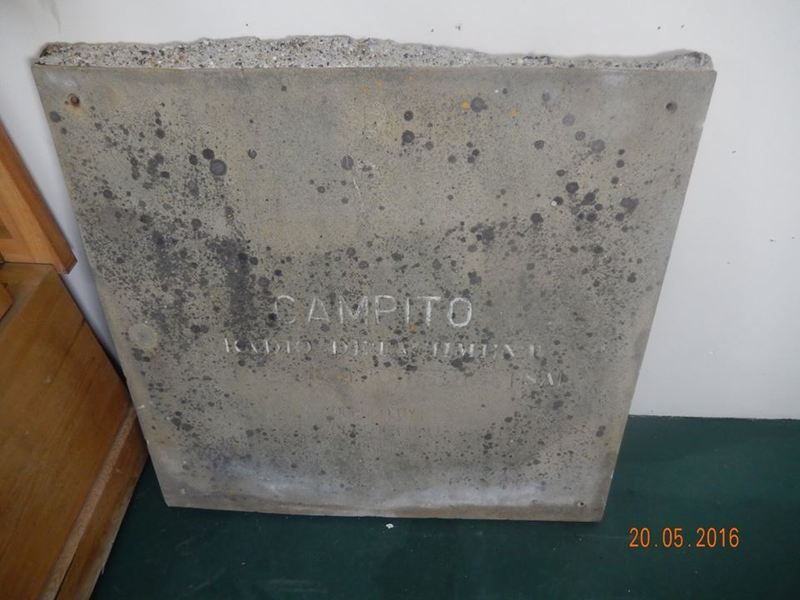
¿Es esta argentino?
Si es así, donde está?
¿Cuál fue el propósito?

Una pregunta genuina para usted - No sé la respuesta :
¿Es esta argentino?
Si es así, donde está?
¿Cuál fue el propósito?


Mount Campito
que cosa horrenda!!! parece un Mini Cooper con un ventilador arriba...

Estimado Cesar,
El mismo Mini Cooper,
pero con el ventilador prendido...


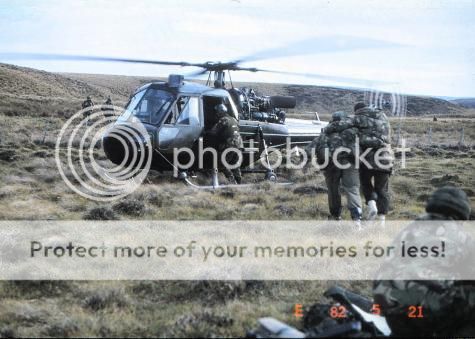
Saludos..!!
.
Última edición:
Estimados,
Una pregunta por favor...
Es real esta imagen...???

Muchas gracias desde ya...
Saludos...
.
Una pregunta por favor...
Es real esta imagen...???

Muchas gracias desde ya...
Saludos...
.
Aparenta ser parte de la misma secuencia...
Alouette III de la ARA sobrevolando a la ARA Guerrico


Alouette III de la ARA sobrevolando a la ARA Guerrico




.
Estimados,
Habria alguna referencia de la misma...???

Muchas gracias desde ya...
Saludos...
.
Habria alguna referencia de la misma...???

Muchas gracias desde ya...
Saludos...
.


.

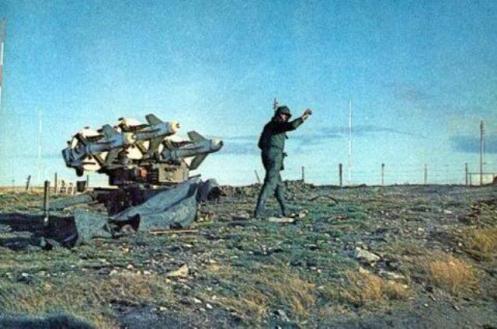

.
Estimado NestorEstimados,
Habria alguna referencia de la misma...???

Muchas gracias desde ya...
Saludos...
.
Yo vi que unicamente los Cuadros y Soldados del RI 25 usaban las bandoleras de lona ,porta cargador de FAL que fueron obtenidas como botin de guerra en Moody Brook,el abrigo Duvet y la forma de doblar el pocho,tambien me dice que es un Soldado del RI 25. Tal vez en San Carlos integrando el Equipo GUEMES.
Estimado Nestor
Yo vi que unicamente los Cuadros y Soldados del RI 25 usaban las bandoleras de lona ,porta cargador de FAL que fueron obtenidas como botin de guerra en Moody Brook,el abrigo Duvet y la forma de doblar el pocho,tambien me dice que es un Soldado del RI 25. Tal vez en San Carlos integrando el Equipo GUEMES.
¿No son muy chicas para un cargador de FAL? ¿quizá sean para peines de cinco o diez proyectiles?
Puede ser Ale,pero los usaban los ingleses.¿No son muy chicas para un cargador de FAL? ¿quizá sean para peines de cinco o diez proyectiles?
rodrigocarra
RED OBSERVADORES DEL AIRE
Estimados,
Una pregunta por favor...
Es real esta imagen...???

Muchas gracias desde ya...
Saludos...
.
Creo que si Nestor y creo que en este mismo hilo se analizó, puede ser otro también.
Abrazos
Temas similares
- Respuestas
- 2K
- Visitas
- 87K
- Respuestas
- 400
- Visitas
- 19K
- Respuestas
- 66
- Visitas
- 3K








